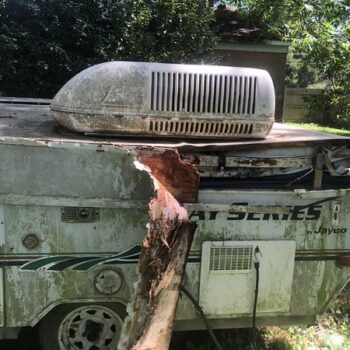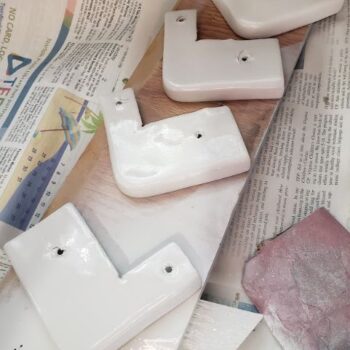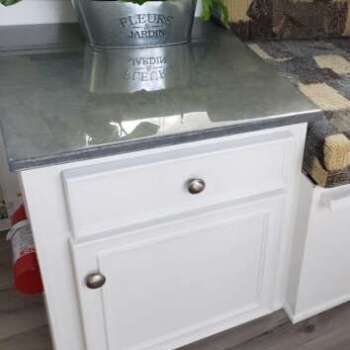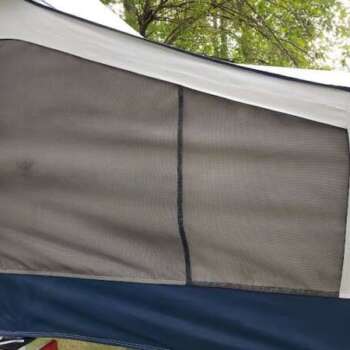If (like me) you are the type of person who applies caulk with the goal of getting professional-looking, smooth joints, then the application and appearance of lap sealant on a camper roof will throw you for a loop.Lap sealant looks more like someone was trying to put icing on a cupcake. Huge blobs of caulk are just puddled over and around fittings. And if someone has recaulked an area, there are even more blobs on top of the older blobs.
It seems counter-intuitive to the goal of preventing water intrusion because the application doesn’t necessarily encourage water to drain away. Even a professionally applied application of lap sealant around an air vent looks more like a mini retention pond after a rain. Andthe edges of those thick blobs seem to be dirt magnets.If you need to recaulk on area on your camper’s roof, you first have to clean all those dirty mounds and, per the manufacturer, apply more mounds of caulk on top of the old caulk rather than removing it.
You are supposed to inspect your roof at least once a year and apply caulk as needed. If you are not the first owner of the camper, you should closely inspect every caulked area on the roof. The previous owner may not have cleaned the old caulk before plopping more mounds of new caulk on top. We’ve removed old caulk that peeled off easily due to the dirt and grime underneath. We’ve found air pockets between layers of caulk. We’ve even found caulk mounds that seeped out tiny water beads when pressed, presumably due to pinholes. By inspecting older applications of caulk, you might be able to identify small pinholes and craters as well as dry or brittle caulk mounds.
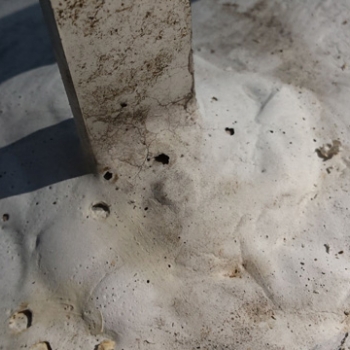
When you’re ready to inspect your roof, begin by giving the roof and the caulk a good cleaning. Here’s a link to our DIY roof cleaner. After rinsing everything off, pay attention to where water may be pooling; especially around the caulk. Once it’s dry, use chalk to draw a circle around any areas that have poor drainage. Then begin inspecting the old caulk, and areas around fitting that may have hairline gaps. Look for signs of brittleness, cracks, pinholes, small cratering, or edges that easily lift up. Again, use the chalk to draw circles around those areas that need attention.
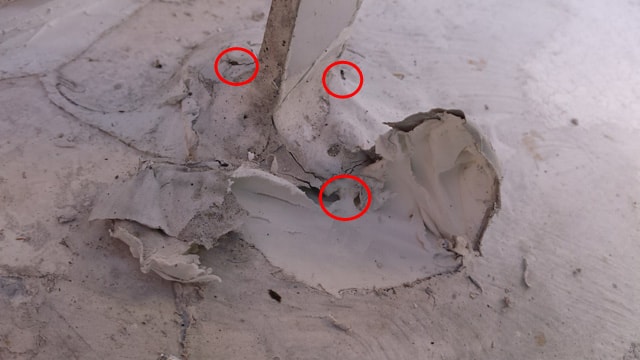
Air pockets, cracks and crevices within several layers of old lap sealant
I prefer to remove old caulk rather than blob more on top. To remove it, use a plastic putty knife or other tool with dull edges. To avoid tearing a rubber roof membrane or scratching an aluminum roof, shimmy the tool around the edge of the caulk until it begins to lift. It’s easiest to do this when outdoor temperatures are above 80 degrees, otherwise you could use a hot air gun or blow dryer to carefully heat the caulk.
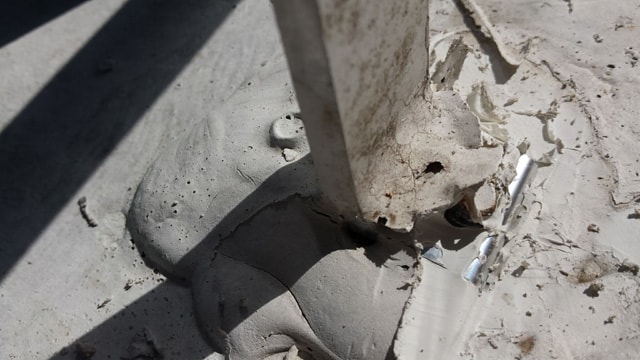
Multiple layers of old lap sealant that was easily pryed apart
It’s not necessary to remove all the caulk; there will be areas where that’s impossible without damaging the rubber membrane. The is to get the old caulk as flush to the rubber surface as possible.
Have a small tub, denatured alcohol, and rags nearby to clean up as you go. Store the can and rags in the small tub. Avoid letting the denatured alcohol make contact with the rubber roof for too long. You will want to have another container for holding the removed caulk.
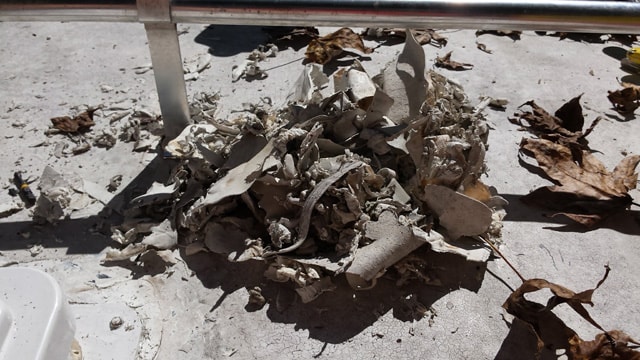
Have a tub handy for all the old sealant
Once most of the old caulk has been removed and the surface has been cleaned and dried, use painter’s tape to define the perimeter of the area to be caulked.
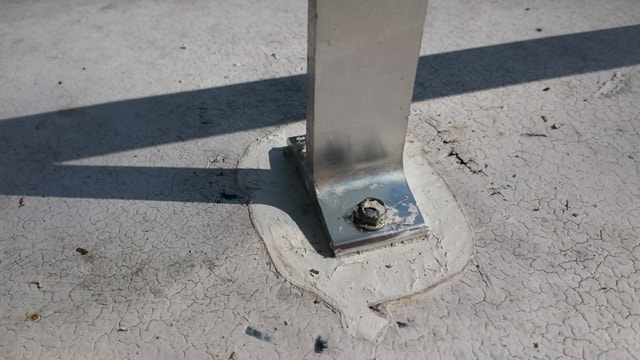
All the old sealant has been removed
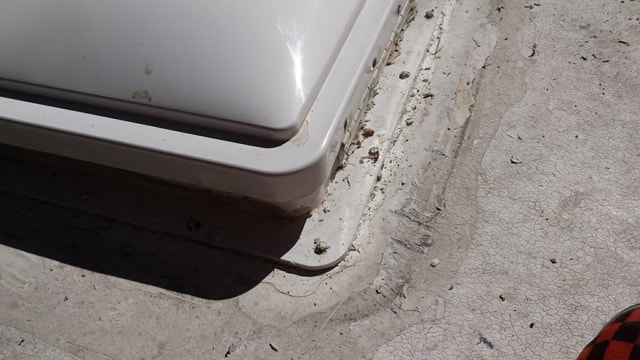
Self-leveling lap sealant really doesn’t level itself out to a nice finish. It more or less just droops into position; hence the cupcake icing appearance. Being particular about how caulk looks, and that it promotes proper drainage, I use a modified application process.
It’s good to know in advance how the caulk will behave. A tube of caulk that is more than one year old can be harder to feed using a caulk gun and may not self-level as smoothly as a newly produced tube of caulk. When buying caulk, check the bottom of the tube for a manufactured date. Less than 6 months is good. If there’s no date, just avoid the tubes that have dust on them or worn bottom edges.
Use a piece of cardboard and lay a small object like a screw or bolt in the middle of the cardboard to test out your caulk. Apply a 3/8 inch bead of sealant in a straight line down the length of the cardboard, making sure to also cover the screw or bolt. The bead should begin flattening out within a few minutes, with about a 1/2 inch spread from the original application point. The sealant should begin skinning over in 5 minutes. Older tubes of sealant may not self-level as nicely or they may skin over much more quickly. Repeat this test for each tube of sealant as you are ready to use it.
Once you know the how your tube of sealant will perform after application and how quickly it will develop a skim coat, you can begin applying beads of sealant. Have a cup of water with 2 drops of Dawn nearby for smoothing. Keep the sealant beads roughly 1/2 inch away from the painter’s tape (or whatever distance your tube test spread indicated). Within 5 minutes of application, dip your fingers or a plastic putty knife into the water/Dawn mixture, then “help” direct the sealant leveling by using light pressure to push the bead flow into the desired slope or shape. Frequently re-wetyour fingers or putty knife. Use the same technique to create a feathered edge toward the painter’s tape. As soon as the sealant develops a skin coat, remove the painter’s tape.
Lap Sealant Cure Time
5 Minutes – Skins over
4 Hours – Waterproof
48 Hours – 80% Cure
30 Days – 100% Cure
Another option is to skip using lap sealant altogether and use roof sealant tape instead. For our second camper roof repair, we only used sealant tape and really preferred the final look. The price of the tape is comparable to using lap sealant (and maybe a little less expensive). We used Beech Lane tape, which we picked up at Amazon for under $35 (here’s the link if interested).
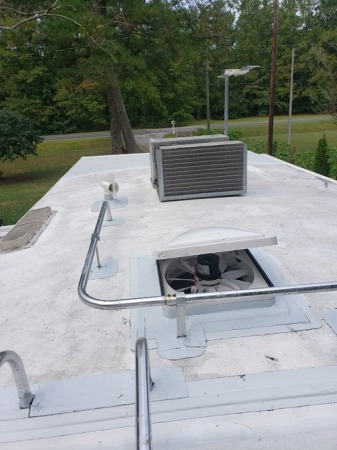
Rubber Sealant Applied To Camper Roof Cleaned
And here’s a photo after applying a fresh coat of rubber roof coating.
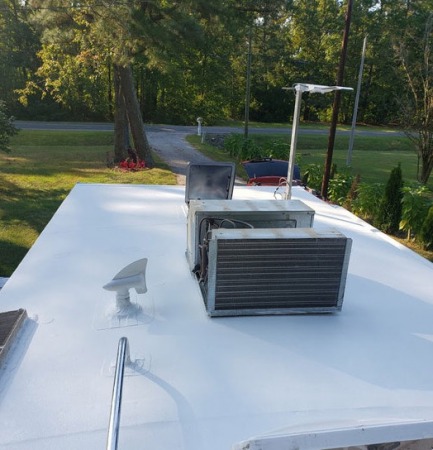
Rubber Sealant Applied To Camper Roof Finished






